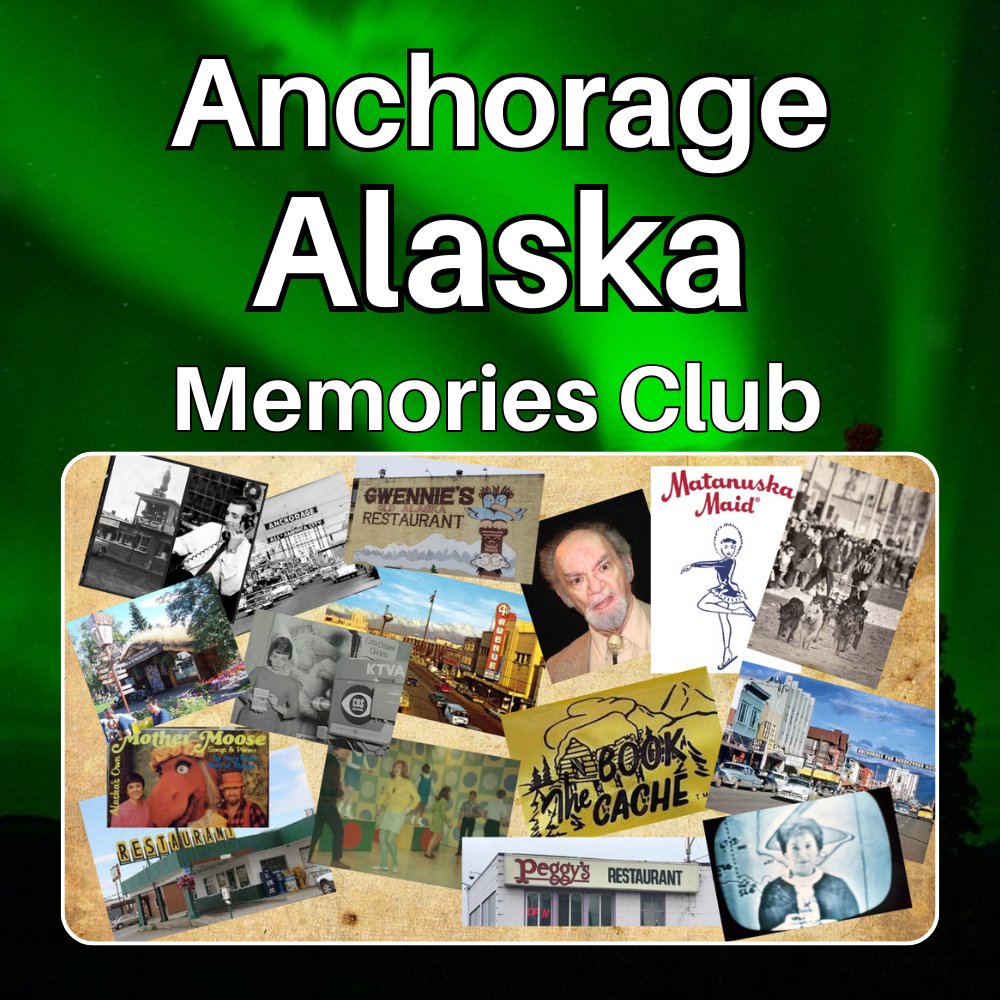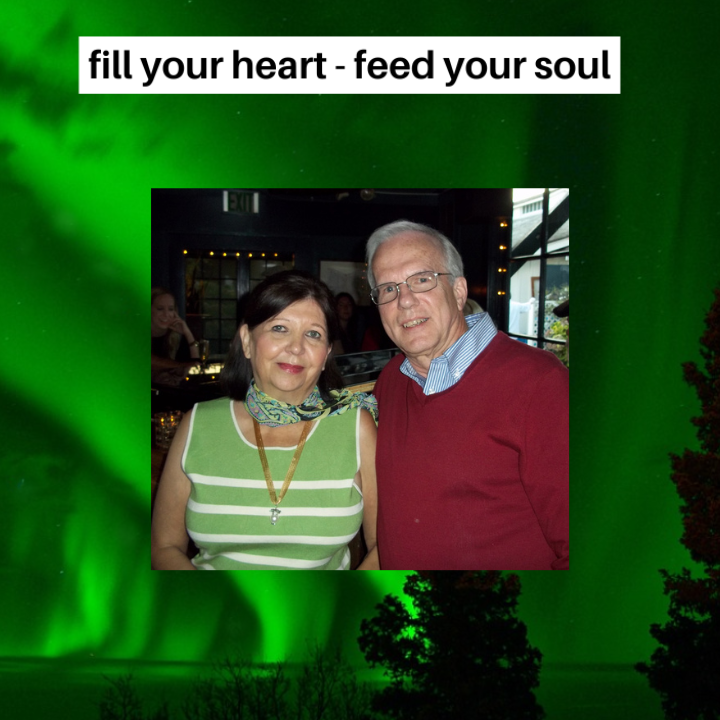Alaska
All the Colors of White
by Linda A. Wingfield
(Corona, South Dakota, USA)
Are these questions familiar?
Did you know any Eskimos?
Did you live in an igloo?
How could you stand all that snowy whiteness?
Is it always dark there?
Is it always daylight there?
These are some of the questions people ask when they discover I lived in Alaska for 26 years.
As I was growing up, I was told that I did live in an igloo—or, as the Eskimos would say in English, a house. Though hunters in Eskimo bands sometimes had to build snow igloos to survive—I was taught—most of the time they lived in other types of homes. I had several Eskimo schoolmates, and none of them had ever seen a snow igloo.
In recent years, tours to Alaska have been advertised all over the world, but people still tend to think of Alaska as a colorless and drab wasteland of snow and ice.
To me, Alaska is a wonderfully colorful and vibrant place that affects the spirit, the soul, and the body. Alaska's unique environment, her multicolored population, her lifestyles, and her myriad languages are all equally, alluringly painted in my memory.
Short-time, winter visitors might well believe the tales of never-ending ice and snow—their mental images of Alaska remaining frozen in black and white. But let me guide you through the 49th State—the Last Frontier—as I remember her. Let me spin for you her complex color wheel, as it revolves through an entire year.
In the icy whiteness of January, black, subarctic nights blend with short, white days, creating an enduring impression of gray. Pale sunshine reaches hesitantly past the horizon about noon, but quickly hides behind the mountains as mid-afternoon threatens. Darkness soon triumphs, defeated only by bright winter moonscapes, sparkling distant stars, and sometimes by the eerie, but spectacular, sliding, whirling rainbows of the Aurora Borealis that sporadically race through the icy skies.
In February—tired of the gray, winter monotony—many brave the frozen highways—heading to Anchorage for the annual Fur Rendezvous. Everywhere one can see huge signs urging you to “Think Snow!” Nature doesn’t always cooperate, so enough snow for the sled-dog races sometimes has to be hauled in. Then the “Rondy” can begin. The sluggish, black, white, and dirty gray of Anchorage's busy city streets become vividly painted and animated, as eager carnival-goers don shiny, insulated snowsuits, hats, and heavy gloves—braving the elements throughout this brief, brilliant winter carnival.
Some weeks later, dog mushers from all over the world travel to the state to join in the Iditarod Trail Race. This event also begins in Anchorage, but its fiercely competitive participants then traverse the icy, white expanse of frozen tundra all the way to Nome—on Alaska's northwestern coast.
“Okay,” you’re probably thinking, “So I was right—Alaska is mainly ice and snow, and mostly black and white!”
But wait! After the long winter, the spring months ease in, causing the cold winter colors to begin to melt and disintegrate—bringing life to a whole different scene. Daylight hours creep slowly backward to mid-morning and inch forward to late afternoon. Sticky, rust-colored willow buds seem to change overnight to the creamier, fluffy softness of pussy willows. Gradually, a tinge of green begins to show through their furry white jackets, and soon the speckled "catkins" drop into dwindling deposits of dirty, leftover snow—allowing tiny, gray-green, velvety willow leaves to appear. Other freshly green leaves soon follow, whispering to the hardy evergreen needles, “It's spring! It's spring! Help us celebrate spring!”
During the spring months, yellow and green tones prevail above knee level, but by looking a bit lower, one can perceive the drab, wet, brown that has begun to spread across the ground—and into the homes. “Breakup", has begun. Aptly named, this “season” is typified by warm yellow sunshine and soft Chinook breezes, which combine to cause the ice, snow, and long-frozen earth to submit to their subtle warmth. Brown, sticky goo inevitably creeps into the homes “on foot”, dulling shiny floors and dirtying carpets for weeks.
As Alaskans begin to spend longer hours outdoors, a breeze of excitement weaves its way through the soft, blue spring skies—the Nenana Ice Classic has begun! This betting pool signals the end of “cabin fever” to many of Alaska’s winter-weary population. The people—freed from their winter imprisonment—place large sums on the exact day and time that the solid Tanana River ice will break up. Radio and television reports keep everyone informed minutely. The actual breakup is recorded electronically, by the moving of a special apparatus secured earlier in the surface of the still-frozen river. As large, gray, and white ice floes begin to slowly grind and shift, the tension mounts…then, “Crack!” Spring rushes in with the thundering roar of waters too long kept locked up by the sparkling, icy grip of winter.
May and June usher in delicate, blue, and yellow forget-me-nots (the state flower) and purplish lupine and iris. Along with fireweed and hundreds of other cascading and fragrant wildflowers, variegated Alaskan poppies begin to nod their rainbow-hued heads in the summer breezes, and brilliant magenta shooting stars cover the drying ground. Leafy green canopies begin to billow atop creamy birch and aspen bark, mottled gray alder trunks, and the muted tan of graceful willow and cottonwood branches. Long bright days taper gently to short pastel nights—accented by soft, often misty, rains and sighing breezes. Alaska has shaken off her heavy, drab (though often beautiful) winter parka and slipped into her brilliant, lightweight, summer windbreaker.
It has always seemed to me that Alaska summers are somewhat frenzied. The “midnight sun” lends its nearly-24-hour light to hundreds of summer-only activities, including Fourth of July parades, fireworks, and festivals. Temperatures that had been well-below zero only a few weeks before, now reach even into the 90s. Flaming pink fireweed stalks stand tall and proud along many winding highways and gravel roads, guarding small, red, wild strawberries, tiny pink and white blossoms that will become lowbush cranberries, crowberries, and other small but plentiful fruit that will be highly treasured in the Fall.
Farmers in the fertile Matanuska-Susitna Valley, outside of Anchorage, are busy taking advantage of the long hours of sunlight and the occasional summer rains to produce prize-winning fruit and vegetables known internationally for their quality and size. It isn’t uncommon to see men and machines laboring to till and plant the rich brown earth, into the wee hours of the twilight mornings.
All too soon, though, August arrives. The nights begin to darken earlier and earlier. However, fall in Alaska is probably more vivid than any other season. Frosty nights, warm days, and winter winds, combine to ripen leaves to gold, rust, then brown, creating a daily kaleidoscope—ever-changing, always calling one to run outside early, and to stay outdoors late.
By this time, the salmonberries have already been harvested. Appropriately named, the salmonberry’s color approximates the flesh of a “pink” (one of the varieties of Alaskan salmon). As youngsters, we would impale one of the juicy fruits on a bent-safety-pin hook then dangle a fishing line in the sparkling streams near our home site, luring the delectable Dolly Varden and Rainbow trout to devour what they thought were clusters of salmon roe. Kin to blackberries, loganberries, and raspberries, the juicy, orange-red salmonberries—at least the ones that make it to the picking buckets—get lined up on pantry shelves, in the guise of wonderful, sparkling preserves and refreshing, colorful wines!
Fire-engine-red elderberries, and readily-available dandelions, have been mashed and fermented to make their tangy wines. As fall settles crisply over the land, glossy, pendulous red currants and duller, rounder, red highbush cranberries beg daily to be scooped from their branches. They will be poured into huge pots to be boiled down into sparkling jellies, wines, and luscious confections. Blueberries hang quietly on their burgundy and green stems, staining harvesters’ fingers and mouths indigo, as they also await their ultimate fate. Alaskan “sourdoughs” gather brilliant autumn fruit from dawn to dusk—packing larders with colorful taste delights guaranteed to brighten even the darkest winter.
I can still visualize the way both the Alaskan wildlife and humans scramble to finish stocking up, as early hard freezes leave in their sparkling wakes the first grays and browns of early winter. Leaves begin to forsake their frozen, lonely branches that then begin to provide nourishment to the moose. Meanwhile, the caribou herds begin their migrations in search of winter feed as well.
Suddenly, it's late October. One morning, lacy white snowflakes float lazily down from thick, heavily-laden clouds, creating starkly beautiful mosaics across the velvet surface of a deep, rich, charcoal gray sky. This is the end—yet the beginning—of another Alaskan cycle of color.
If you were a bear, you’d be snugly hibernating in a deep, dark cave, dreaming of your busy, painted summer. Being human, you can’t hide from the whiteness of winter, but you can face it more boldly by keeping the brilliant, vivid images of the seasons just gone past at the forefront of your mind, and by anticipating another brightly-colored spring—just around the corner.
Yes—I knew some Eskimos when I grew up in Alaska.
Yes—I lived in an igloo—at least the English version of one.
Yes—I endured the snowy whiteness and the darkness of the winters.
However, my memory returns mainly to a vividly colorful Alaska, where I lived for 26 years, and to the special warmth and color of Alaska's people.
Comments for Alaska
|
||
|
||





